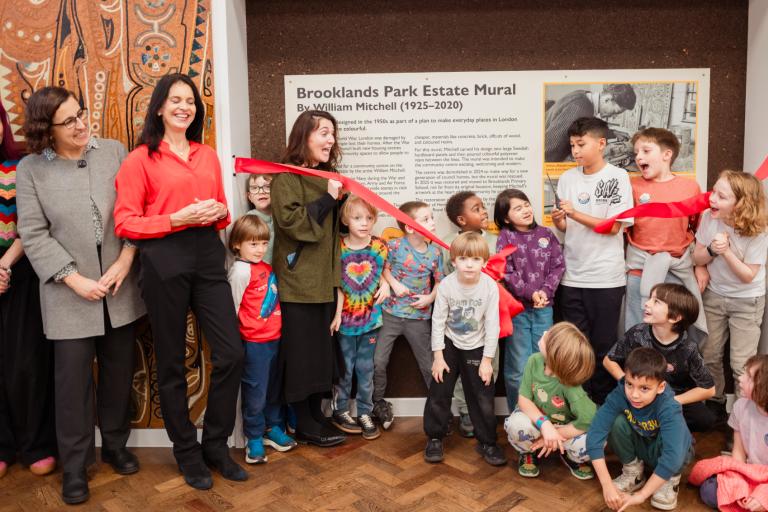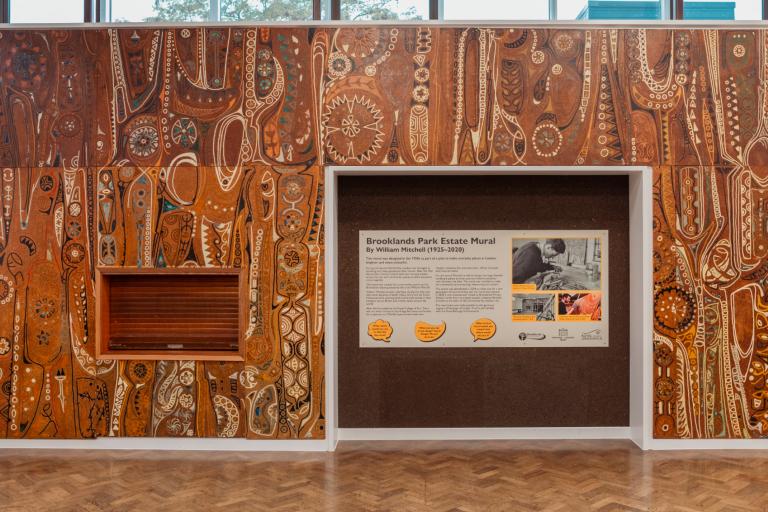
A rare mural that was discovered while building new social housing in Blackheath has been restored and moved to a local primary school.
The Brooklands mural was commissioned as a public artwork in the 1950s, and is one of the best-kept examples of work by key post-war artist and sculptor William Mitchell.
The artwork was discovered in a disused community centre which was being demolished to make way for new social housing, as part of the 1,750 home Greenwich Builds programme under the council’s Housing Our Greenwich plan.

Councillor Anthony Okereke, Leader of the Royal Borough of Greenwich, said:
"The Brooklands mural reminds us how local and national government came together after World War 2 to create social housing on a massive scale, for the benefit of everyone in society.
The mural's rescue, restoration and relocation to make way for a new generation of social housing seems a fitting way to pay tribute to this era in our history, continuing the legacy of public good of which William Mitchell's mural is part.
We hope it will enrich the lives of pupils in its new home at Brooklands Primary School, and thank both the Heritage of London Trust and the Twentieth Century Society for their generous support and expertise, helping us preserve this part of Royal Greenwich’s cultural legacy for future generations."
Ward members for Blackheath Westcombe, Councillors Leo Fletcher, Mariam Lolavar and Christine St. Matthew-Daniel, said:
"It has been our privilege to work with local residents, the Heritage of London Trust and the Twentieth Century and Blackheath Societies to protect and preserve this culturally significant mural.
We are delighted that this rare example of William Mitchell’s work has been restored so beautifully, and remains at the heart of Blackheath where it can continue to inspire local people for many years to come."
The council worked with local residents, ward councillors and the Blackheath and Twentieth Century Societies to successfully bid for funding from the Heritage of London Trust, helping to pay for work to conserve and restore the artwork.

The mural was thoroughly cleaned to remove decades of ingrained dirt, paint damage and to stabilise the top layer of the chipboard, which was delaminating.
Losses were filled with pigmented resin and damaged areas were retouched and coloured with acrylic wash. Restoration was carried out by Temple Studios.
The mural’s new location, Brooklands Primary School, is just 250m from the old community centre and was built at the same time as part of the Brooklands Estate. An unveiling ceremony was held to celebrate the mural’s restoration.
School pupils learned about the techniques and technology used to restore artwork during the installation, producing their own artworks in response to Mitchell's work. Several children made speeches about what they'd learned during the workshops during the launch event, with one expressing that "having this mural in my school makes me feel special".

William Mitchell produced several large-scale public murals and sculptures from the 1950s onwards. He has more artworks listed on the national register than any other post-war artist, including the fibreglass reliefs on the doors of Liverpool’s Metropolitan Cathedral, the iconic Egyptian Staircase in Harrods, Clifton Cathedral’s Stations of the Cross in concrete, and a striking mural in the Curzon Cinema, Mayfair.
The Brooklands mural was completed in 1958 and was a London County Council Patronage of the Arts project, commissioned for the clubroom of the Brooklands Park Estate, a post-war housing estate built in Blackheath between 1955 and 1958.